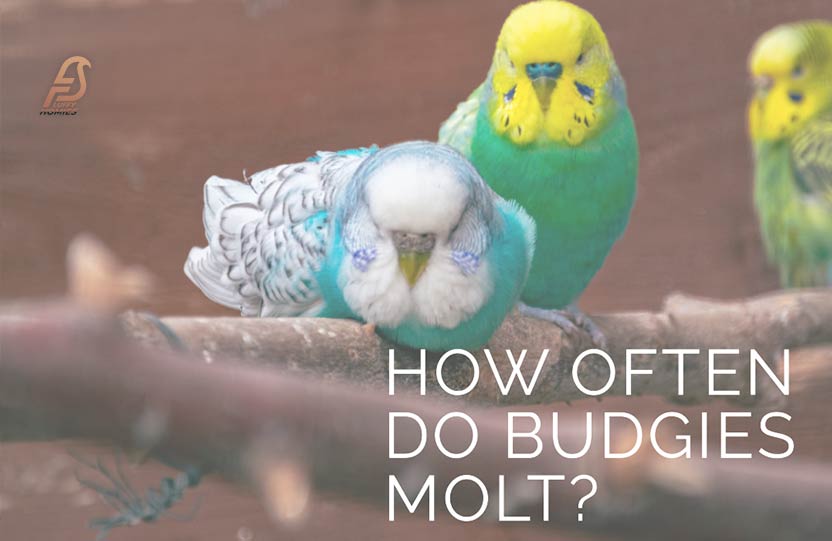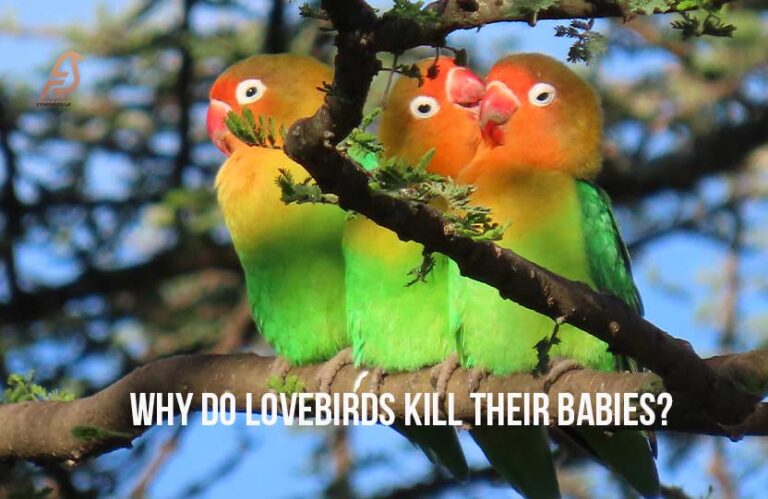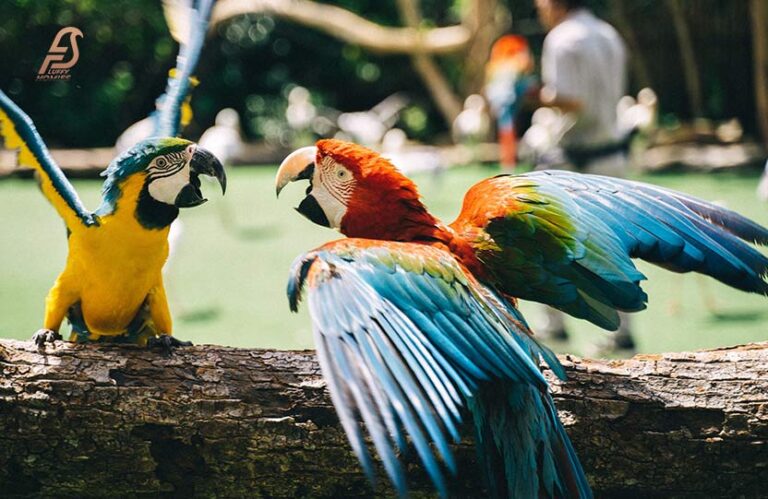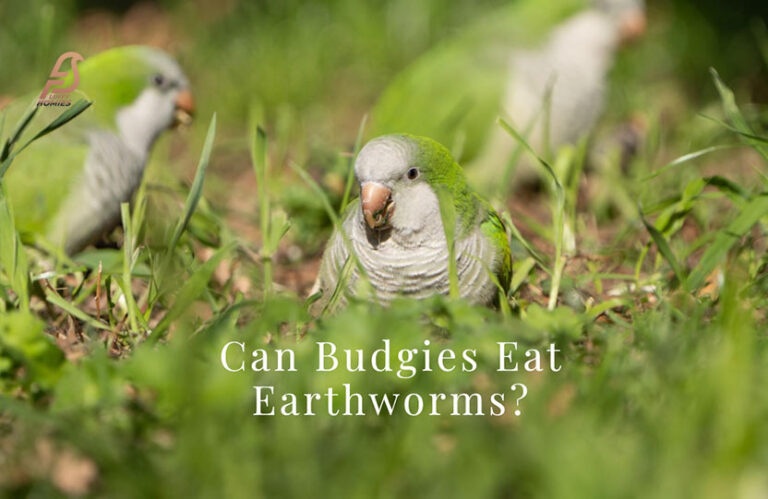How Often Do Budgies Molt? (Feathers in Flux 2023)
If you own a budgie or are considering getting one, it’s important to understand their molting process. Molting is a natural occurrence in budgies where they shed and replace their feathers.
In the following sections, we will delve deeper into the reasons why budgies molt, how often they go through this process, and how you can identify the signs of molting in your feathered companion.
Understanding these aspects will enable you to provide appropriate care and support to your budgie during this fascinating phase of feather renewal.
What Is Molting?
Molting is a natural biological process in which birds shed their old feathers and grow new ones to maintain healthy plumage.
Budgies, also known as parakeets, are no exception to this phenomenon. Molting plays a crucial role in the overall health and well-being of budgies, ensuring their feathers remain in optimal condition.
During molting, budgies gradually shed their old feathers, which may have become worn out, damaged, or faded over time.
These feathers are replaced by new ones, allowing the budgie to maintain its ability to fly, insulate its body, and display its vibrant colors.
The molting process is driven by a complex interplay of hormonal changes and environmental factors.
Hormonal shifts trigger the growth of new feathers, while external factors such as changes in daylight duration and temperature fluctuations can also influence the timing and duration of molting.
Why Do Budgies Molt?
Molting is a natural process for budgies and serves several important purposes. Understanding why budgies molt can help you appreciate the significance of this process in their overall well-being.
Feathers play a crucial role in a budgie’s life. They provide insulation, assist in flight, and contribute to their overall appearance.
Over time, feathers can become worn out, damaged, or lose their functionality.
Molting allows budgies to shed these old feathers and grow new ones, ensuring that their plumage remains healthy and functional. You also curious about when do birds molt?
Replace Old Feathers
One primary reason budgies molt is to replace their old feathers. Feathers are made of keratin, a protein that can become damaged or worn out over time.
Through molting, budgies can shed these old feathers and replace them with fresh ones, promoting optimal feather health and functionality.
Adapt Seasonal Changes
Molting also helps budgies adapt to seasonal changes. In the wild, budgies experience variations in temperature and daylight hours throughout the year.
Molting allows them to adjust their plumage accordingly. For example, during the summer months, budgies may molt to grow in lighter feathers that help regulate their body temperature.
In the winter, they may molt to grow in denser feathers that provide better insulation.
Grow New Feathers
Additionally, molting supports the growth of new feathers. As budgies molt, they grow new feathers to replace the ones they shed.
These new feathers are essential for maintaining their flight capabilities, as well as for displaying vibrant colors and patterns. Proper feather growth during molting ensures that budgies continue to thrive and exhibit their natural beauty.
How Often Do Budgies Molt?
Understanding the frequency of budgie molting is important for budgie owners to have a clear expectation of when their feathered friends may go through this natural process.
The most common molting pattern for budgies is an annual molt, which typically occurs once a year. This annual molt often takes place during the warmer months, such as spring or summer.
During this time, budgies shed their old feathers and grow new ones to ensure optimal feather health and functionality.
However, it’s essential to note that molting frequency can vary among individual budgies. Various factors can influence how often a budgie molts.
These factors include age, health, diet, and environmental conditions.
Age
Young budgies, especially those under a year old, may experience more frequent molting compared to older budgies.
This is because young budgies go through a process called juvenile molt, where they transition from their juvenile plumage to their adult plumage. Juvenile molting can occur multiple times during a budgie’s first year of life.
Health & Diet
Health and diet also play a significant role in molting frequency. A budgie that is in good health and receiving a balanced and nutritious diet is more likely to have regular, healthy molts.
On the other hand, budgies that are experiencing health issues or have poor nutrition may have irregular or delayed molts.
Environmental Conditions
Environmental conditions, such as temperature and daylight hours, can also influence molting frequency.
Budgies living in regions with distinct seasons may follow a more predictable molting schedule, with molt occurring during the warmer months.
However, budgies living in areas with consistent environmental conditions may have less pronounced molting patterns.
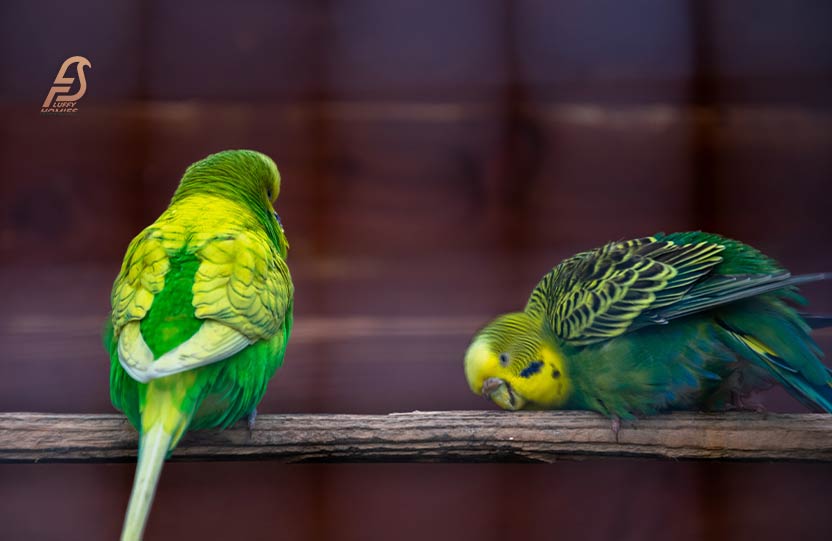
What Are the Stages of Molting in Budgies?
The molting process in budgies occurs in several stages, each with its characteristics and duration.
Understanding these stages can give your insight into the timeline and progression of molting in your budgie. Here are the typical stages of molting:
Feather Loss
The first stage of molting involves the shedding of old feathers. Budgies will begin to lose their old feathers, which may fall out gradually or in clumps. Feather loss usually starts from the head and neck area and then progresses down the body.
Feather Regeneration
After the old feathers have been shed, the next stage is feather regeneration. New feathers will start to grow from the follicles, replacing the ones that were shed. Initially, the new feathers may appear as small pin feathers, covered in a protective sheath.
Sheath Removal
As the new feathers grow, the keratin sheath that covers the pin feathers starts to break away. Budgies will often engage in preening activities during this stage to remove the sheaths and help the new feathers unfurl properly.
Feather Growth and Maturation
Once the sheaths have been removed, the new feathers continue to grow and mature. The blood supply to the feathers recedes, and they develop their characteristic shape, color, and structure.
This stage can take several weeks to months, depending on the budgie’s molting pattern and overall health.
Completion of Molting
The final stage of molting is the completion of the process, where all the old feathers have been replaced by new ones. Budgies will have their full set of fresh, healthy feathers, and they will return to their normal appearance.
Do Budgies Act Differently When Molting?
Molting is a natural process that can have an impact on a budgie’s behavior. During this time, budgies may exhibit certain changes in their actions and habits.
Understanding these behavioral changes can help you provide the necessary care and support to your budgie during the molting process.
Preening & Grooming
One common behavior seen in budgies during molting is increased preening and grooming. Budgies will spend more time grooming themselves as they shed old feathers and grow new ones.
You may notice them using their beaks to clean and rearrange their feathers, ensuring they are properly aligned and in optimal condition.
This increased focus on grooming is an essential part of the molting process as budgies strive to maintain their feather health.
Increased Sensitivity
Another behavior that budgies may display when molting is increased sensitivity. The process of shedding old feathers and growing new ones can sometimes cause discomfort or sensitivity in certain areas of the body.
As a result, budgies may become more sensitive to touch or prefer to be left alone during this time. It’s important to respect their need for solitude and create a calm and quiet environment to help them feel comfortable.
Appetite & Energy Levels
Appetite and energy levels can also be affected during molting. Some budgies may experience a temporary decrease in appetite or energy due to the energy demands of feather growth.
However, it’s important to monitor their overall health and ensure they are still eating and drinking enough.
If you notice a significant decrease in appetite or a prolonged decrease in energy levels, it’s advisable to consult with an avian veterinarian to rule out any underlying health issues.
What Triggers Budgie Molting?
Budgie molting is influenced by various factors, both internal and external. Understanding these triggers can give you insights into why and when your budgie may go through the molting process.
Changes in Daylight Hours
Budgies are sensitive to changes in daylight hours, and it plays a significant role in triggering molting. As the days become longer during spring and summer, budgies are stimulated to molt.
The increase in daylight acts as a signal for their bodies to shed old feathers and grow new ones.
Temperature
Temperature fluctuations also play a role in triggering molting. Warmer temperatures are associated with increased metabolic activity in budgies, which in turn can stimulate molting. As the seasons change and temperatures rise, budgies may initiate the molting process.
Diet
Nutrition is crucial for healthy feather growth and molting. Budgies require a balanced and nutritious diet to provide the necessary nutrients for feather development.
A diet deficient in essential nutrients can delay or disrupt the molting process. Ensure your budgie’s diet includes a variety of fresh fruits, vegetables, high-quality seeds, and pellets to support their feather health.
Stress
Stress can impact a budgie’s overall health, including its molting patterns. Excessive stress or changes in the environment, such as moving to a new home or the presence of predators, can trigger abnormal molting or delay the molting process.
Providing a calm and secure environment for your budgie is crucial to minimize stress-related disruptions to their molting.
Hormonal Changes
Hormonal fluctuations can influence molting. For example, female budgies may experience molting related to their reproductive cycle.
Hormonal changes can affect molting patterns, with some budgies molting more heavily during breeding seasons. These hormonal triggers can vary among individual budgies.
How do you Know if Your Budgie is Molting? Signs of Molting in Budgies
Budgies are destructive birds that commonly play with their feathers. Identifying whether your budgie is molting is important to provide appropriate care and support during this natural process.
While each budgie’s molting experience can vary, some common signs and indicators can help you determine if your budgie is going through a molt.
Feather Loss
One of the most noticeable signs of molting is feather loss. During molting, budgies will shed their old feathers to make way for new ones.
You may find feathers in their cage or notice feather fragments on the floor around their perches.
It’s important to differentiate between normal feather loss during molting and excessive feather plucking, which can be a sign of health or behavioral issues.
New Feather Growth
Alongside feather loss, you may also observe new feather growth. As the molt progresses, you’ll notice small pin-like structures emerging from the skin, which will eventually grow into full-sized feathers.
These new feathers may appear as soft, downy structures at first and gradually develop into mature feathers.
Increased Preening
Budgies will exhibit increased preening and grooming behavior during molting. They will spend more time using their beaks to clean and rearrange their feathers.
This is their way of maintaining feather health and ensuring the proper alignment and condition of their plumage.
Changes in Feather Color or Pattern
Depending on the specific molting process, some budgies may experience changes in feather color or pattern.
This can be especially noticeable during molts that involve a transition from juvenile plumage to adult plumage. The appearance of new feathers may reveal vibrant colors or patterns that were not present before.
Mood and Behavior Changes
Some budgies may exhibit changes in their mood or behavior during molting. They may appear more sensitive, irritable, or seek solitude.
It’s important to provide a calm and stress-free environment during this time, as budgies may require additional reassurance and patience.
What Time of the Year Do Budgies Molt?
The timing of budgie molting can vary depending on several factors, including geographic location, environmental conditions, and individual budgie characteristics.
However, there are general patterns regarding the time of year when budgies commonly molt.
In regions with distinct seasons, budgies often molt during the warmer months, typically in spring or summer.
This is because the increase in daylight hours and higher temperatures during these seasons provide optimal conditions for feather growth and regeneration.
During this time, budgies shed their old feathers and grow new ones to ensure feather health and functionality.
Do Budgies Feel Unwell When Molting?
Molting is a natural process for budgies, and while it can cause some temporary discomfort, it does not typically make them feel unwell.
Budgies have evolved to molt as a way to maintain the health and functionality of their feathers.
However, it’s important to monitor your budgie’s overall well-being during the molting process and be attentive to any signs of illness or distress.
While molting itself does not usually make budgies feel unwell, it’s essential to differentiate between normal molting and any underlying health issues that may coincide with the molting period.
Molting can sometimes coincide with other factors that could affect your budgie’s health, such as changes in diet, environmental stressors, or pre-existing health conditions.
If your budgie displays symptoms such as excessive weight loss, loss of appetite, unusual droppings, labored breathing, or lethargy, it could be an indication of an underlying health issue unrelated to molting.
In such cases, it’s important to consult with an avian veterinarian for a thorough examination and appropriate treatment.
How Can I Help My Budgie Molt? Tips for Supporting Molting Budgies
While molting is a natural process for budgies, there are several ways you can provide support and help facilitate a smooth molt for your feathered friend.
Here are some tips to assist your budgie during the molting period:
Balanced Nutrition
A well-balanced diet is crucial for healthy feather growth. Ensure your budgie’s diet consists of a variety of fresh fruits, vegetables like budgies can eat parsley, high-quality seeds, and pellets.
Nutrients such as protein, vitamins, and minerals are essential for feather development. Consider adding supplements like calcium or omega-3 fatty acids to promote healthy feather growth.
Hydration and Bathing
Adequate hydration is important for molting budgies. Provide your budgie with fresh water at all times and encourage regular bathing.
A shallow dish of water or a bird bath can be provided for them to bathe and clean their feathers. Bathing helps soften the keratin sheaths around new feathers, making it easier for them to break through the skin.
Gentle Handling
During molting, your budgie’s feathers may be sensitive, and they may experience discomfort if handled too roughly.
Minimize handling and opt for gentle interactions to avoid causing stress or physical discomfort. Allow your budgie to have sufficient rest and undisturbed time during the molting process.
Safe and Comfortable Environment
Create a safe and comfortable environment for your budgie during molting. Ensure their cage is clean and free from drafts.
Provide a variety of perches, including different sizes and textures, to assist with foot health and to accommodate their changing feather condition.
Avoid placing perches directly under bright lights or heat sources that can cause excessive drying of feathers.
Reduce Stress
Stress can negatively impact molting. Minimize potential stressors such as loud noises, sudden changes in the environment, or the presence of predators.
Keep the cage in a quiet and calm area of your home to create a stress-free environment. Maintain a consistent daily routine to provide stability for your budgie.
Observe and Monitor
Regularly observe your budgie’s molt progression and overall health. Monitor for any signs of illness or abnormal behavior.
If you notice any concerning symptoms or changes, consult with an avian veterinarian for professional guidance and care.
Conclusion — How Often Do Budgies Molt?
Molting is a natural process for budgies that allows them to replace old and damaged feathers.
Understanding how often budgies molt, the stages of molting, and providing appropriate care can help ensure the well-being of your feathered friend.
By providing a balanced diet, encouraging bathing, and maintaining a comfortable environment, you can support your budgie during this essential phase of their life.
FAQs — How Often Do Budgies Molt?
How long do budgie molts last?
The molting process can last anywhere from a few weeks to a couple of months, depending on the individual budgie.
Can molting cause discomfort, stress, or pain to budgies?
Molting can sometimes cause mild discomfort due to itching or irritation as new feathers grow in, but it should not be excessively painful for budgies.
How do I know when my budgie is molting?
You can tell your budgie is molting if you notice feather loss, new feather growth, increased preening, or the presence of molted feathers in their cage.
